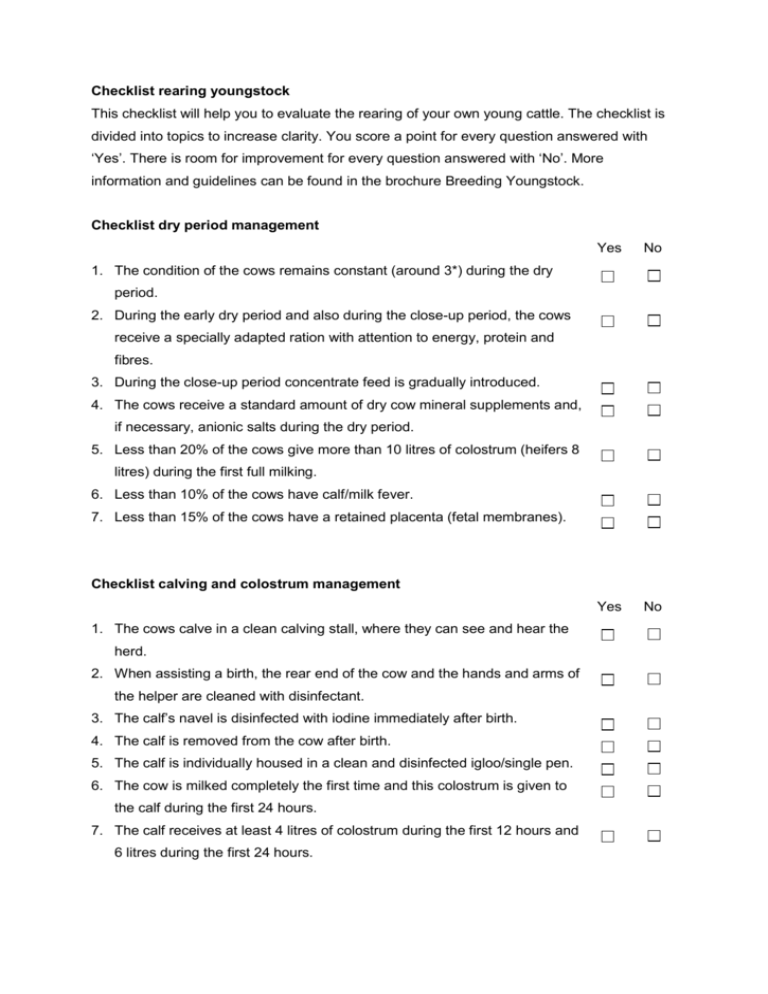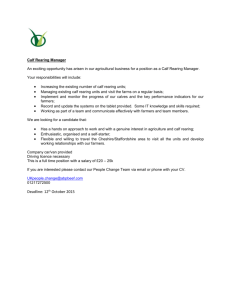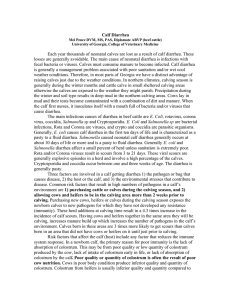Checklist_jongvee_EN
advertisement

Checklist rearing youngstock This checklist will help you to evaluate the rearing of your own young cattle. The checklist is divided into topics to increase clarity. You score a point for every question answered with ‘Yes’. There is room for improvement for every question answered with ‘No’. More information and guidelines can be found in the brochure Breeding Youngstock. Checklist dry period management Yes No Yes No 1. The condition of the cows remains constant (around 3*) during the dry period. 2. During the early dry period and also during the close-up period, the cows receive a specially adapted ration with attention to energy, protein and fibres. 3. During the close-up period concentrate feed is gradually introduced. 4. The cows receive a standard amount of dry cow mineral supplements and, if necessary, anionic salts during the dry period. 5. Less than 20% of the cows give more than 10 litres of colostrum (heifers 8 litres) during the first full milking. 6. Less than 10% of the cows have calf/milk fever. 7. Less than 15% of the cows have a retained placenta (fetal membranes). Checklist calving and colostrum management 1. The cows calve in a clean calving stall, where they can see and hear the herd. 2. When assisting a birth, the rear end of the cow and the hands and arms of the helper are cleaned with disinfectant. 3. The calf’s navel is disinfected with iodine immediately after birth. 4. The calf is removed from the cow after birth. 5. The calf is individually housed in a clean and disinfected igloo/single pen. 6. The cow is milked completely the first time and this colostrum is given to the calf during the first 24 hours. 7. The calf receives at least 4 litres of colostrum during the first 12 hours and 6 litres during the first 24 hours. Checklist for rearing calves Yes No Yes No 1. The percentage of calf mortality at or soon after birth is less than 5%. 2. The percentage of calf mortality during the first month of life is less than 5%. 3. After the colostrum period, artificial milk or pasteurised cow’s milk is fed. 4. Each calf has its own feed bucket which is cleaned with hot (>65ºC) water after each feed. 5. From 7 days old, each calf has fresh water, concentrate feed and fresh roughage. 6. When using an automatic calf feeder (CALM), it is cleaned on a daily basis and checked and calibrated each month. 7. At the time of weaning, the concentrate feed intake per calf is at least 1.5 kg. 8. The chest measurement of the calves (HF) at weaning is at least 95 cm (>80 kg). 9. During weaning, stress is avoided by not introducing any further changes. 10. The stall climate at animal height is optimal (no draughts, fresh air, no smell of ammonia). 11. The calves are housed separately from the older cattle until they are 12 months old. 12. Health, rumen fill and feed intake are monitored on a daily basis. Checklist for rearing young cattle 1. In addition to a balanced, appetizing diet, the young cattle receive extra minerals and vitamins. 2. The condition of the young cattle at 14-16 months is maximally 3*. 3. The yearlings are inseminated/covered when they weigh at least 370 kg (168 cm chest measurement HF) at approximately 14-15 months old. 4. From 5-6 weeks before calving, the heifers receive the same diet as the close-up cows. 5. After calving, the heifers weigh approximately 570 kg. 6. The condition of the heifers at calving averages 3.5*. Checklist animal health and hygiene Yes 1. Work is always carried out starting from young to old and from healthy to sick. 2. Different boots and overalls are worn when attending calves or older cattle. 3. Calves with diarrhoea are separated from the others to avoid transmission through direct contact, manure, drinking troughs, feeding troughs, etc. 4. A manure sample is taken from a calf with diarrhoea on the very first day in order to determine the cause. 5. To prevent respiratory infections the housing conditions of the calves are optimal and the calves are vaccinated. * Condition score on a scale of 1 (thin) to 5 (fat). No




